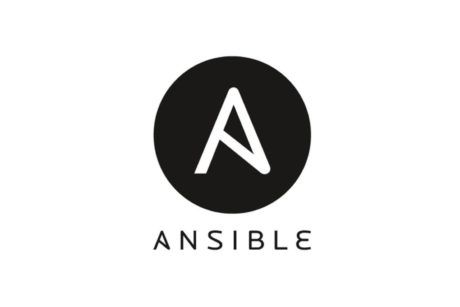Master Ansible programming for efficient Linux system administration tasks with our tutorial. Streamline your IT operations today! Read more.
Luca Berton is an Ansible Automation Engineer of Red Hat, based in Brno - Czech Republic. With more than 15 years of experience as a System Administrator, he has strong expertise in Infrastructure Hardening and Automation. Enthusiast of the Open Source supports the community by sharing his knowledge in different public access events—geek by nature, Linux by choice, Fedora, of course.
Access all courses in our library for only $9/month with All Access Pass
Get Started with All Access PassBuy Only This CourseAbout This Course
Who this course is for:
- System Administrator
- IT Professional
- Cloud Engineer
- DevOps
What you’ll learn:
- Ansible in real-life use cases
- Manage files with Ansible in Linux
- Manage directory with Ansible in Linux
- Perform modification in files and directories with Ansible in Linux
Requirements:
- Ansible basic knowledge
Learn the Ansible automation technology with some real-life examples.
Every successful IT department needs automation nowadays for bare metal servers, virtual machines, cloud, containers, and edge computing. Automate your IT journey with Ansible automation technology.
I’m going to teach you, example by example, how to manage files, and directories, rename, create empty files, and copy between local and remote in Linux, macOS, and Windows operation systems are the most common System Administrator tasks.
Each of the 45+ lessons summarizes a specific scenario about files and directories management: creating an empty file, creating a text file, assigning permission to users and groups, renaming files and directory, removing the files and directory, or copying between local and remote and vice-versa. Another useful administrator tool is to assign permission to files or directories as needed. Included extraction of a compressed zip file or tarball with the most common gzips and bzip2 UNIX formats. Moreover, that is a lesson about file downloading from a URL and verifying the genuinity with the checksum.
You could easily customize the example code with your username and use it in your everyday journey without any additional effort.
There are some Ansible codes usable in all the Linux systems, macOS and Windows, battle-tested in RedHat-like and Debian-like systems.
Are you ready to automate your day with Ansible?
Our Promise to You
By the end of this course, you will have learned different Ansible codes for different scenarios.
10 Day Money Back Guarantee. If you are unsatisfied for any reason, simply contact us and we’ll give you a full refund. No questions asked.
Get started today!
Course Curriculum
| Section 1: Introduction | |||
| Welcome | 00:00:00 | ||
| Interact To Linux Filesystem With Ansible By Examples | 00:00:00 | ||
| Section 2: Install Ansible | |||
| How To Install Ansible In Redhat Enterprise Linux 8 | 00:00:00 | ||
| How To Install Ansible In Ubuntu 20.04 LTS | 00:00:00 | ||
| How To Install Ansible In CentOS 8 | 00:00:00 | ||
| How To Install Ansible In CentOS Stream 8 | 00:00:00 | ||
| How To Install Ansible In Debian 11 | 00:00:00 | ||
| How To Install Ansible In Fedora 35 | 00:00:00 | ||
| How To Install Ansible In Amazon Linux 2 (AWS EC2) | 00:00:00 | ||
| How To Install Ansible In CentOS 9 Stream | 00:00:00 | ||
| How To Install Ansible In Almalinux 8 | 00:00:00 | ||
| How To Install Ansible In SUSE Linux Enterprise Server (SLES) 15 Sp3 | 00:00:00 | ||
| How To Install Ansible In Rocky Linux 9 | 00:00:00 | ||
| How To Install Ansible In Fedora 36 | 00:00:00 | ||
| How To Install Ansible In Almalinux 9 | 00:00:00 | ||
| How To Install Ansible In Ubuntu 22.04 LTS Jammy Jellyfish | 00:00:00 | ||
| Section 3: Ansible Playbook Code For Linux | |||
| Test Host Availability – Ansible Module Ping | 00:00:00 | ||
| Print A Text Or Variable During Execution – Ansible Module Debug | 00:00:00 | ||
| Pause Execution – Ansible Module Pause | 00:00:00 | ||
| Read A File Into A Variable On Host – Ansible Lookup Plugin File | 00:00:00 | ||
| Section 4: Ansible Code To Interact With Linux Filesystem | |||
| Create An Empty File – Ansible Module File | 00:00:00 | ||
| Create A Text File – Ansible Module Copy | 00:00:00 | ||
| Check If A File Exists – Ansible Module Stat | 00:00:00 | ||
| Create A Directory – Ansible Module File | 00:00:00 | ||
| Check If A Directory Exists – Ansible Module Stat | 00:00:00 | ||
| Rename File Or Directory – Ansible Module Copy And File | 00:00:00 | ||
| Change File Permission – Ansible Module File | 00:00:00 | ||
| Add Execute Permission 755 Linux File – Ansible Module File | 00:00:00 | ||
| Delete File Or Directory – Ansible Module File | 00:00:00 | ||
| Create A Symbolic Link (Also Symlink Or Soft Link) In Linux -Ansible Module File | 00:00:00 | ||
| Create A Hard Link In Linux – Ansible Module File | 00:00:00 | ||
| Download A File – Ansible Module Get_Url | 00:00:00 | ||
| Copy Files To Remote Hosts – Local To Remote – Ansible Module Copy | 00:00:00 | ||
| Copy Files From Remote Hosts – Remote To Local – Ansible Module Fetch | 00:00:00 | ||
| Extract An Archive – Ansible Module Unarchive | 00:00:00 | ||
| Mount A Windows Share In Linux SMB Or CIFS – Ansible Module Mount | 00:00:00 | ||
| Mount An NFS Share In Linux – Ansible Module Mount | 00:00:00 | ||
| Schedule A Cron Job Task In Linux – Ansible Module Cron | 00:00:00 | ||
| Concatenate Multiple Files In A Specific Order – Ansible Module Template And Yam | 00:00:00 | ||
| Backup With Rsync – Local To Remote – Ansible Module Synchronize | 00:00:00 | ||
| How To Delete Only Files Inside A Directory – Ansible Module Find | 00:00:00 | ||
| Find All Files With Extension — Ansible Module Find | 00:00:00 | ||
| Search For A String In A File -Ansible Module Lineinfile | 00:00:00 | ||
| Create ISO Image From Files And Folders | 00:00:00 | ||
| Section 5: Thank You | |||
| Thank You | 00:00:00 | ||
About This Course
Who this course is for:
- System Administrator
- IT Professional
- Cloud Engineer
- DevOps
What you’ll learn:
- Ansible in real-life use cases
- Manage files with Ansible in Linux
- Manage directory with Ansible in Linux
- Perform modification in files and directories with Ansible in Linux
Requirements:
- Ansible basic knowledge
Learn the Ansible automation technology with some real-life examples.
Every successful IT department needs automation nowadays for bare metal servers, virtual machines, cloud, containers, and edge computing. Automate your IT journey with Ansible automation technology.
I’m going to teach you, example by example, how to manage files, and directories, rename, create empty files, and copy between local and remote in Linux, macOS, and Windows operation systems are the most common System Administrator tasks.
Each of the 45+ lessons summarizes a specific scenario about files and directories management: creating an empty file, creating a text file, assigning permission to users and groups, renaming files and directory, removing the files and directory, or copying between local and remote and vice-versa. Another useful administrator tool is to assign permission to files or directories as needed. Included extraction of a compressed zip file or tarball with the most common gzips and bzip2 UNIX formats. Moreover, that is a lesson about file downloading from a URL and verifying the genuinity with the checksum.
You could easily customize the example code with your username and use it in your everyday journey without any additional effort.
There are some Ansible codes usable in all the Linux systems, macOS and Windows, battle-tested in RedHat-like and Debian-like systems.
Are you ready to automate your day with Ansible?
Our Promise to You
By the end of this course, you will have learned different Ansible codes for different scenarios.
10 Day Money Back Guarantee. If you are unsatisfied for any reason, simply contact us and we’ll give you a full refund. No questions asked.
Get started today!
Course Curriculum
| Section 1: Introduction | |||
| Welcome | 00:00:00 | ||
| Interact To Linux Filesystem With Ansible By Examples | 00:00:00 | ||
| Section 2: Install Ansible | |||
| How To Install Ansible In Redhat Enterprise Linux 8 | 00:00:00 | ||
| How To Install Ansible In Ubuntu 20.04 LTS | 00:00:00 | ||
| How To Install Ansible In CentOS 8 | 00:00:00 | ||
| How To Install Ansible In CentOS Stream 8 | 00:00:00 | ||
| How To Install Ansible In Debian 11 | 00:00:00 | ||
| How To Install Ansible In Fedora 35 | 00:00:00 | ||
| How To Install Ansible In Amazon Linux 2 (AWS EC2) | 00:00:00 | ||
| How To Install Ansible In CentOS 9 Stream | 00:00:00 | ||
| How To Install Ansible In Almalinux 8 | 00:00:00 | ||
| How To Install Ansible In SUSE Linux Enterprise Server (SLES) 15 Sp3 | 00:00:00 | ||
| How To Install Ansible In Rocky Linux 9 | 00:00:00 | ||
| How To Install Ansible In Fedora 36 | 00:00:00 | ||
| How To Install Ansible In Almalinux 9 | 00:00:00 | ||
| How To Install Ansible In Ubuntu 22.04 LTS Jammy Jellyfish | 00:00:00 | ||
| Section 3: Ansible Playbook Code For Linux | |||
| Test Host Availability – Ansible Module Ping | 00:00:00 | ||
| Print A Text Or Variable During Execution – Ansible Module Debug | 00:00:00 | ||
| Pause Execution – Ansible Module Pause | 00:00:00 | ||
| Read A File Into A Variable On Host – Ansible Lookup Plugin File | 00:00:00 | ||
| Section 4: Ansible Code To Interact With Linux Filesystem | |||
| Create An Empty File – Ansible Module File | 00:00:00 | ||
| Create A Text File – Ansible Module Copy | 00:00:00 | ||
| Check If A File Exists – Ansible Module Stat | 00:00:00 | ||
| Create A Directory – Ansible Module File | 00:00:00 | ||
| Check If A Directory Exists – Ansible Module Stat | 00:00:00 | ||
| Rename File Or Directory – Ansible Module Copy And File | 00:00:00 | ||
| Change File Permission – Ansible Module File | 00:00:00 | ||
| Add Execute Permission 755 Linux File – Ansible Module File | 00:00:00 | ||
| Delete File Or Directory – Ansible Module File | 00:00:00 | ||
| Create A Symbolic Link (Also Symlink Or Soft Link) In Linux -Ansible Module File | 00:00:00 | ||
| Create A Hard Link In Linux – Ansible Module File | 00:00:00 | ||
| Download A File – Ansible Module Get_Url | 00:00:00 | ||
| Copy Files To Remote Hosts – Local To Remote – Ansible Module Copy | 00:00:00 | ||
| Copy Files From Remote Hosts – Remote To Local – Ansible Module Fetch | 00:00:00 | ||
| Extract An Archive – Ansible Module Unarchive | 00:00:00 | ||
| Mount A Windows Share In Linux SMB Or CIFS – Ansible Module Mount | 00:00:00 | ||
| Mount An NFS Share In Linux – Ansible Module Mount | 00:00:00 | ||
| Schedule A Cron Job Task In Linux – Ansible Module Cron | 00:00:00 | ||
| Concatenate Multiple Files In A Specific Order – Ansible Module Template And Yam | 00:00:00 | ||
| Backup With Rsync – Local To Remote – Ansible Module Synchronize | 00:00:00 | ||
| How To Delete Only Files Inside A Directory – Ansible Module Find | 00:00:00 | ||
| Find All Files With Extension — Ansible Module Find | 00:00:00 | ||
| Search For A String In A File -Ansible Module Lineinfile | 00:00:00 | ||
| Create ISO Image From Files And Folders | 00:00:00 | ||
| Section 5: Thank You | |||
| Thank You | 00:00:00 | ||



